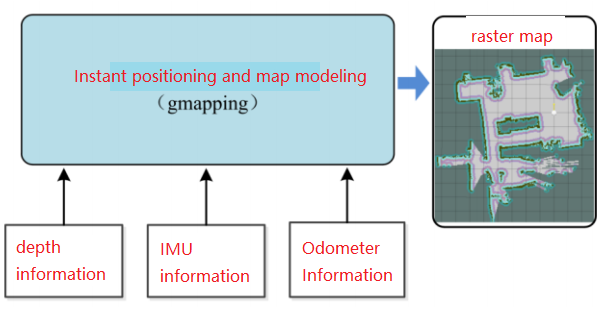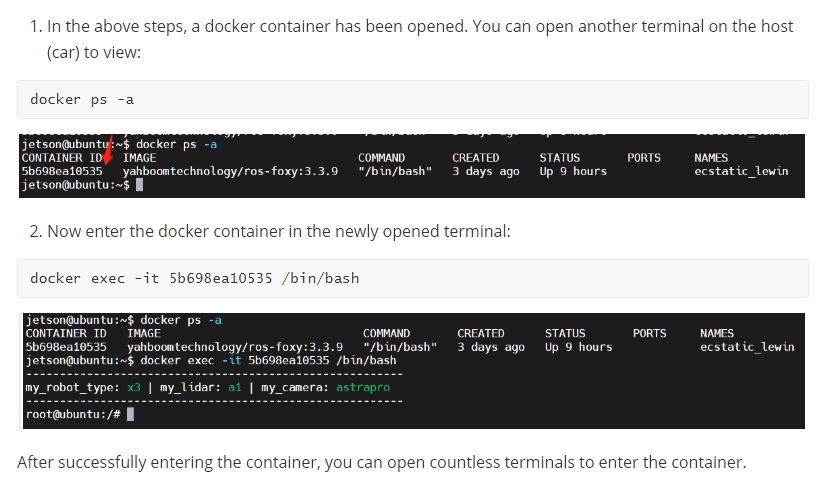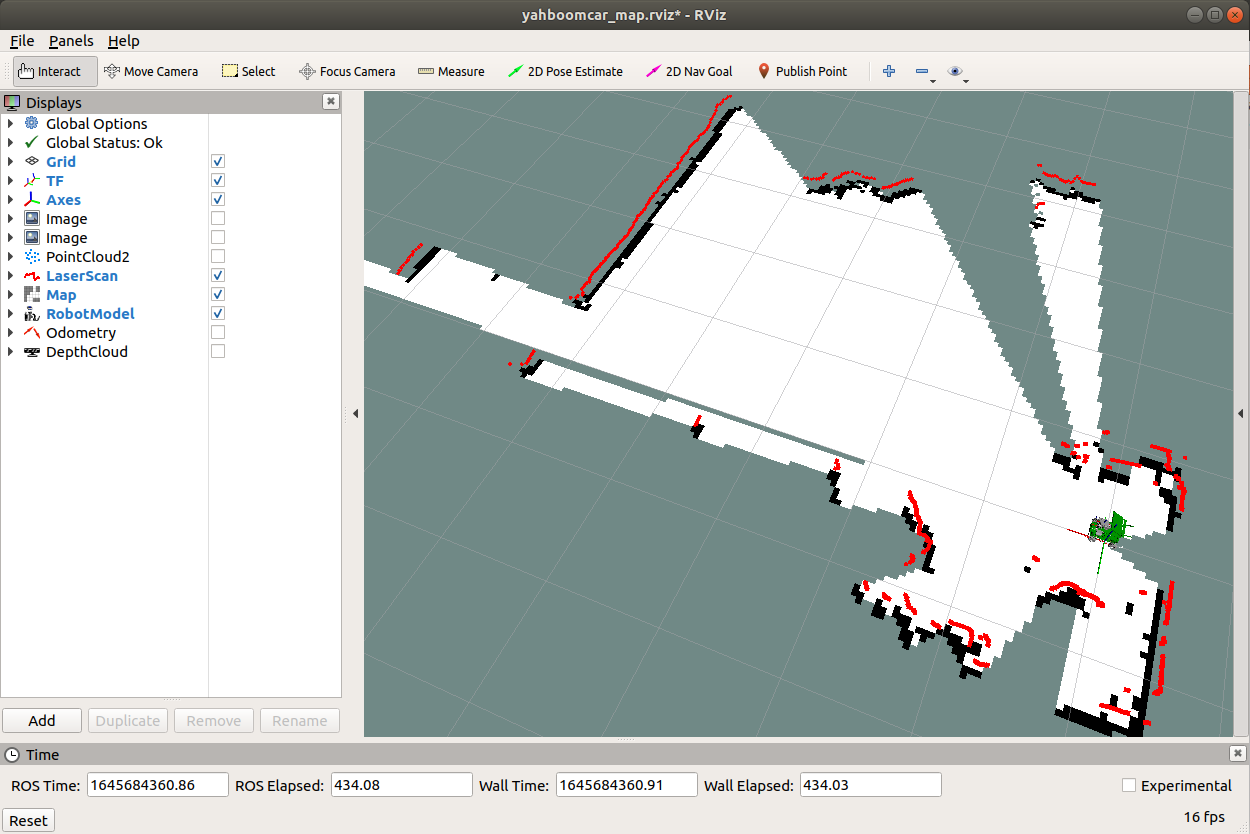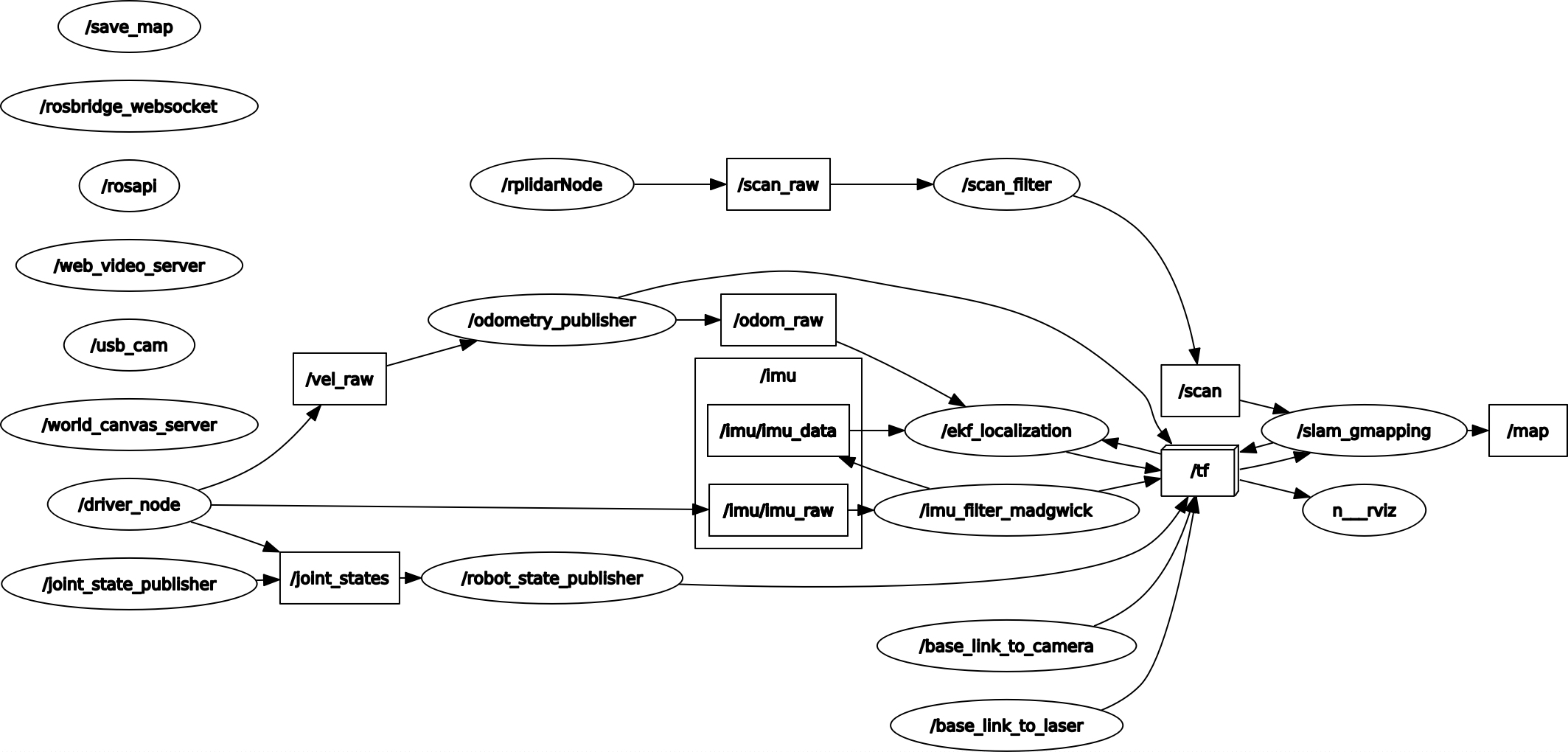6. gmapping mapping algorithm
6. gmapping mapping algorithm6.1. Introduction6.2. Use6.2.1. Start6.2.2. Controlling the robot6.2.3. Map saving6.2. Topics and services6.3. Configuration parameters6.4, TF transformation
Gmapping: http://wiki.ros.org/gmapping/
map_server: https://wiki.ros.org/map_server
6.1. Introduction
gmapping is only applicable to points where the number of two-dimensional laser points in a single frame is less than 1440. If the number of laser points in a single frame is greater than 1440, then problems such as [[mapping-4] process has died] will occur.
Gmapping is a commonly used open source SLAM algorithm based on the filtered SLAM framework.
Gmapping is based on the RBpf particle filter algorithm, which separates the real-time positioning and mapping processes. Positioning is performed first and then mapping is performed.
Gmapping has made two major improvements on the RBpf algorithm: improved proposal distribution and selective resampling.
Advantages:Gmapping can construct indoor maps in real time. The amount of calculation required to construct small scene maps is small and the accuracy is high.
Disadvantages: As the scene grows, the number of particles required increases because each particle carries a map, so the amount of memory and computation required when building a large map increases. Therefore it is not suitable for building large scene maps. And there is no loop detection, so the map may be misaligned when the loop is closed. Although increasing the number of particles can close the map, it comes at the expense of increased calculations and memory.

6.2. Use
Note: When building a map, the slower the speed, the better the effect (note that the rotation speed should be slower). If the speed is too fast, the effect will be poor.
According to different models, you only need to set the purchased model in [.bashrc], X1 (normal four-wheel drive) X3 (Mailun) Take X3 as an example
xxxxxxxxxx#Raspberry Pi 5 master needs to enter docker first, please perform this step#If running the script into docker fails, please refer to ROS/07, Docker tutorial~/run_docker.shOpen the [.bashrc] file
xxxxxxxxxxsudo vim .bashrc
Find the [ROBOT_TYPE] parameters and modify the corresponding car model
xxxxxxxxxxexport ROBOT_TYPE=X3 # ROBOT_TYPE: X1 X3 X3plus R2 X76.2.1. Start
Start the command (robot side). For the convenience of operation, this section takes [mono + laser + yahboomcar] as an example.
xxxxxxxxxxroslaunch yahboomcar_nav laser_bringup.launch # laser + yahboomcarroslaunch yahboomcar_nav laser_usb_bringup.launch # mono + laser + yahboomcarroslaunch yahboomcar_nav laser_astrapro_bringup.launch # Astra + laser + yahboomcar<PI5 needs to open another terminal to enter the same docker container

Mapping command (robot side)
xxxxxxxxxxroslaunch yahboomcar_nav yahboomcar_map.launch use_rviz:=false map_type:=gmapping[use_rviz] parameter: whether to enable rviz visualization.
[map_type] parameter: Set the mapping algorithm [gmapping].
Turn on the visual interface (virtual machine side)
xxxxxxxxxxroslaunch yahboomcar_nav view_map.launch

The gap at the back of the robot is due to the obstruction caused by the installation position of the display screen, so a certain range of radar data is blocked. The shielding range can be adjusted, or it can not be blocked according to the actual situation. For specific operations, see [01. Radar Basic Course].
6.2.2. Controlling the robot
Keyboard controls robot movement
xxxxxxxxxxrosrun teleop_twist_keyboard teleop_twist_keyboard.py # System integrationroslaunch yahboomcar_ctrl yahboom_keyboard.launch # CustomControl the robot movement with the handle
Make the robot cover the area to be mapped and the map should be as closed as possible.
There may be some scattered points during the mapping process. If the mapping environment is well closed, relatively regular, and the movement is slow, the scattering phenomenon will be much smaller.
6.2.3. Map saving
xxxxxxxxxxrosrun map_server map_saver -f ~/yahboomcar_ws/src/yahboomcar_nav/maps/my_map # The first waybash ~/yahboomcar_ws/src/yahboomcar_nav/maps/map.sh # The second wayThe map will be saved to the ~/yahboomcar_ws/src/yahboomcar_nav/maps/ folder, a pgm image and a yaml file.
map.yaml
xxxxxxxxxximage: map.pgmresolution: 0.05origin: [-15.4,-12.2,0.0]Negate: 0occupied_thresh: 0.65free_thresh: 0.196Parameter analysis:
image: The path of the map file, which can be an absolute path or a relative path.
resolution: resolution of the map, meters/pixel
Origin: 2D pose (x, y, yaw) in the lower left corner of the map. The yaw here is rotated counterclockwise (yaw=0 means no rotation). Many parts of the current system ignore the yaw value.
negate: whether to reverse the meaning of white/black and free/occupied (the interpretation of the threshold is not affected)
occupied_thresh: Pixels with an occupation probability greater than this threshold will be considered fully occupied.
free_thresh: Pixels with occupancy probability less than this threshold will be considered completely free.
6.2. Topics and services
| Subscription topic | Type | Description |
|---|---|---|
| tf | tf/tfMessage | Used for conversion between lidar coordinate system, base coordinate system, and odometer coordinate system |
| scan | sensor_msgs/LaserScan | Lidar scan data |
| Post Topic | Type | Description |
| map_metadata | nav_msgs/MapMetaData | Publish map Metadata |
| map | nav_msgs/OccupancyGrid | Publish map raster data |
| ~entropy | std_msgs/Float64 | Publish an estimate of the entropy of the robot pose distribution |
| Service | Type | Description |
| dynamic_map | nav_msgs/GetMap | Get map data |
Node view
xxxxxxxxxxrqt_graph

6.3. Configuration parameters
| Parameters | Type | Default value | Description |
|---|---|---|---|
| ~throttle_scans | int | 1 | Each time this number of frames of laser data is received, only one frame of data is processed. By default, each frame of data is processed |
| ~base_frame | string | "base_link" | Robot base coordinate system |
| ~map_frame | string | "map" | Map coordinate system |
| ~odom_frame | string | "odom" | Odometer coordinate system |
| ~map_update_interval | float | 5.0 | Map update frequency, the lower the value, the greater the computational load |
| ~maxUrange | float | 80.0 | The maximum range that the laser can detect |
| ~sigma | float | 0.05 | standard deviation of endpoint matches |
| ~kernelSize | int | 1 | Search in the corresponding kernel |
| ~lstep | float | 0.05 | Optimization step size during translation |
| ~astep | float | 0.05 | Optimization step size during rotation |
| ~iterations | int | 5 | Number of iterations to scan for matches |
| ~lsigma | float | 0.075 | Laser standard deviation of likelihood calculation |
| ~ogain | float | 3.0 | Used to smooth the resampling effect during likelihood calculation |
| ~lskip | int | 0 | Number of beams skipped per scan |
| ~minimumScore | float | 0 | The minimum value of scan matching results. When using a laser scanner with a limited range (e.g. 5m), jumping in large open spaces can be avoided |
| ~srr | float | 0.1 | Translation function (rho/rho), odometry error during translation |
| ~srt | float | 0.2 | rotation function (rho/theta), odometry error in translation |
| ~str | float | 0.1 | Translation function (theta/rho), odometry error when rotating |
| ~stt | float | 0.2 | Rotation function (theta/theta), odometry error when rotating |
| ~linearUpdate | float | 1.0 | Process the laser scanning data every time the robot translates this distance |
| ~angularUpdate | float | 0.5 | The robot processes laser scanning data every time it rotates this distance |
| ~temporalUpdate | float | -1.0 | Process a scan if the latest scan is processed slower than the update. Turn off time-based updates when this value is negative |
| ~resampleThreshold | float | 0.5 | Neff-based resampling threshold |
| ~particles | int | 30 | Number of particles in the filter |
| ~xmin | float | -100.0 | Initial minimum size of map in x direction |
| ~ymin | float | -100.0 | The initial minimum size of the map in the y direction |
| ~xmax | float | 100.0 | The initial maximum size of the map in the x direction |
| ~ymax | float | 100.0 | The initial maximum size of the map in the y direction |
| ~delta | float | 0.05 | map resolution |
| ~llsamplerange | float | 0.01 | Translation sampling distance for likelihood calculation |
| ~llsamplestep | float | 0.01 | translation sampling step for likelihood calculation |
| ~lasamplerange | float | 0.005 | Rotated sampling distance for likelihood calculation |
| ~lasamplestep | float | 0.005 | Rotation sampling step size for likelihood calculation |
| ~transform_publish_period | float | 0.05 | TF transform publishing time interval |
| ~occ_threh | float | 0.25 | Threshold for raster map occupancy |
| ~maxRange(float) | float | - | The maximum range of the sensor |
6.4, TF transformation
| Required TF transformation | Description |
|---|---|
| laser-->base_link | The transformation between the laser radar coordinate system and the base coordinate system is generally published by robot_state_publisher or static_transform_publisher |
| base_link-->odom | Transformation between the map coordinate system and the robot odometer coordinate system, estimating the robot's pose in the map |
| Released TF Transform | Description |
| map-->odom | Transformation between the map coordinate system and the robot's odometry coordinate system, estimating the robot's pose in the map |
View tf tree
xxxxxxxxxxrosrun rqt_tf_tree rqt_tf_tree
